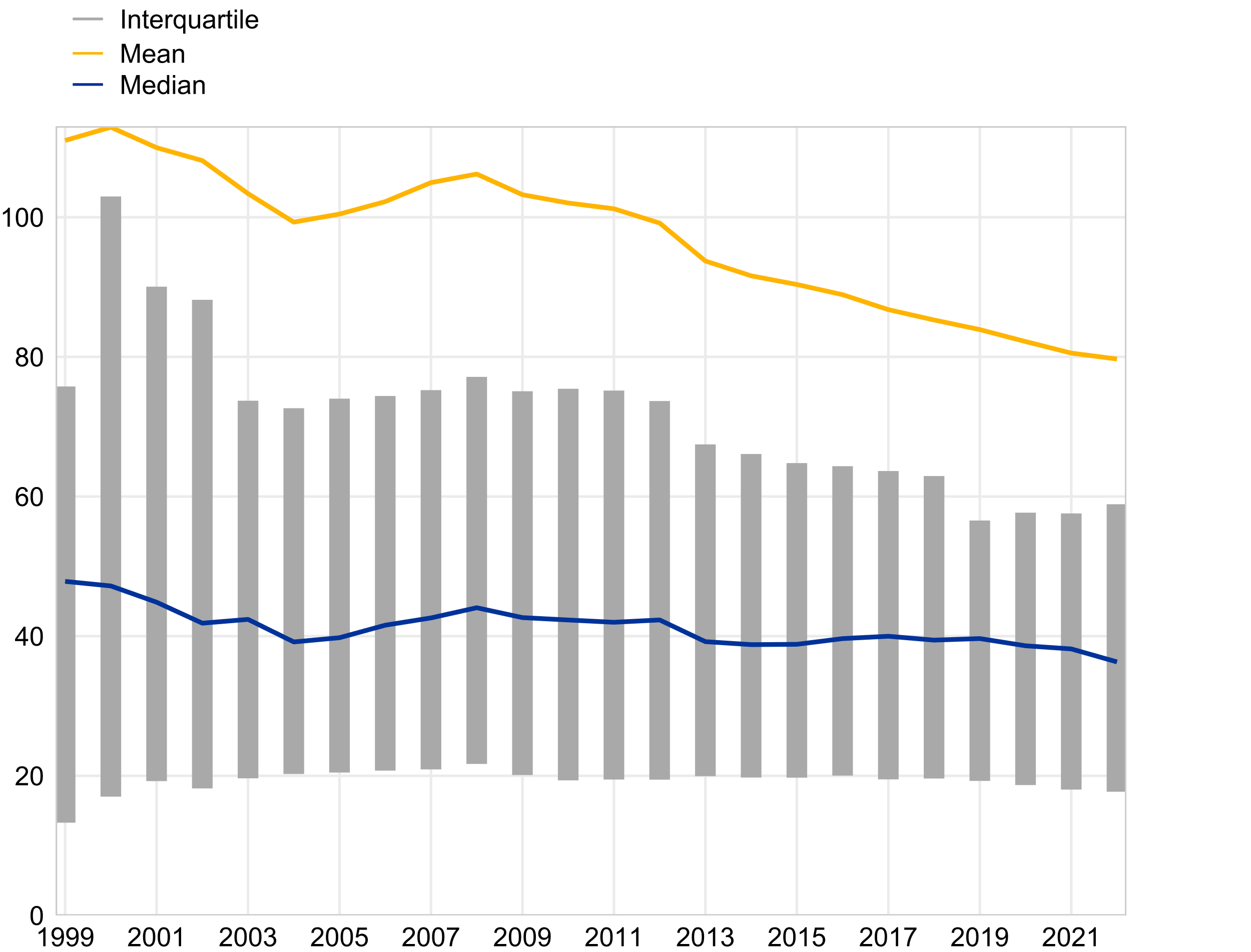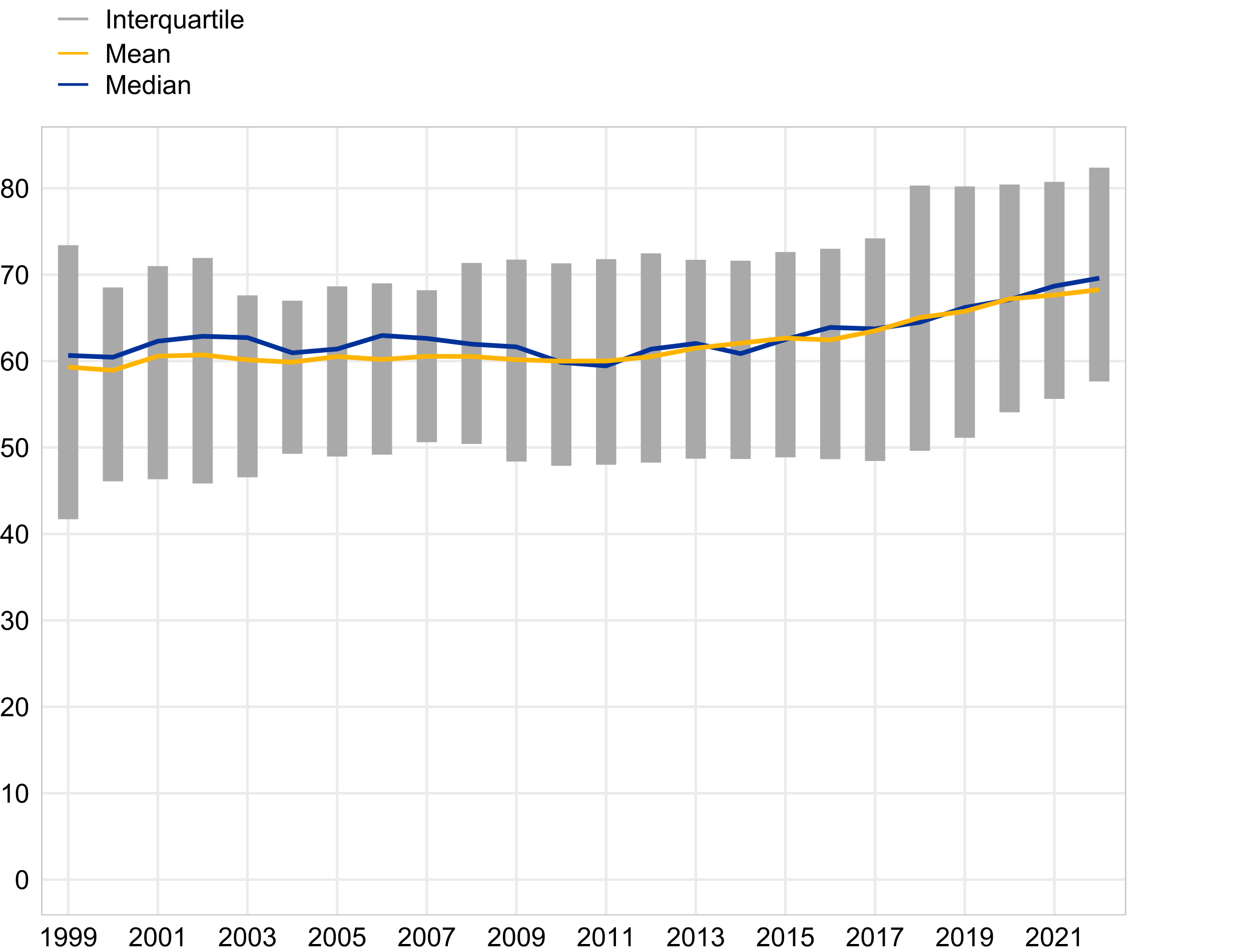
1 June 2023
The European Central Bank (ECB) has updated its dataset of structural financial indicators for the banking sector in the European Union (EU) for the end of 2022. This annual dataset comprises statistics on the number of offices and employees of EU credit institutions, data on banking sector concentration in each EU Member State and data on foreign-controlled institutions operating in the EU.
The structural financial indicators show a further decline in the number of bank offices in the EU, averaging 5.39% across Member States. Decreases were observed in 25 of the 27 countries, ranging from -0.98% to -21.54%. The total number of offices in the EU was 132,871 at the end of 2022, of which 82.8% were located in the euro area.
In the course of 2022, the number of employees of credit institutions fell in 18 EU Member States, with an average drop of 1.25% across all countries. This decline in the number of bank employees is a trend seen in most countries since 2008.
The data also indicate that the degree of banking sector concentration (measured by the share of assets held by the five largest banks) continues to vary considerably between EU Member States. At national level the share of total assets of the five largest credit institutions ranged from 31.16% (Luxembourg) to 95.72% (Greece) at the end of 2022, while the EU average was 68.27%.
The structural financial indicators are published annually by the ECB.
Chart 1
Number of employees of domestic credit institutions
(thousands)
Notes: Interquartile ranges and medians are calculated across average country values. Data are available for all EU27 countries.
Chart 2
Share of assets held by the five largest banks
(percentages)
Notes: Interquartile ranges and medians are calculated across average country values. Data are available for all EU27 countries.
For media queries, please contact Philippe Rispal, tel.: +49 69 1344 5482.
Notes:
- Tables containing further breakdowns of structural financial indicator statistics are available in the ECB Statistical Data Warehouse.
- Structural Financial Indicators data are available in the ECB Statistical Data Warehouse.
- Hyperlinks in this press release lead to data that may change with subsequent releases as a result of revisions.





